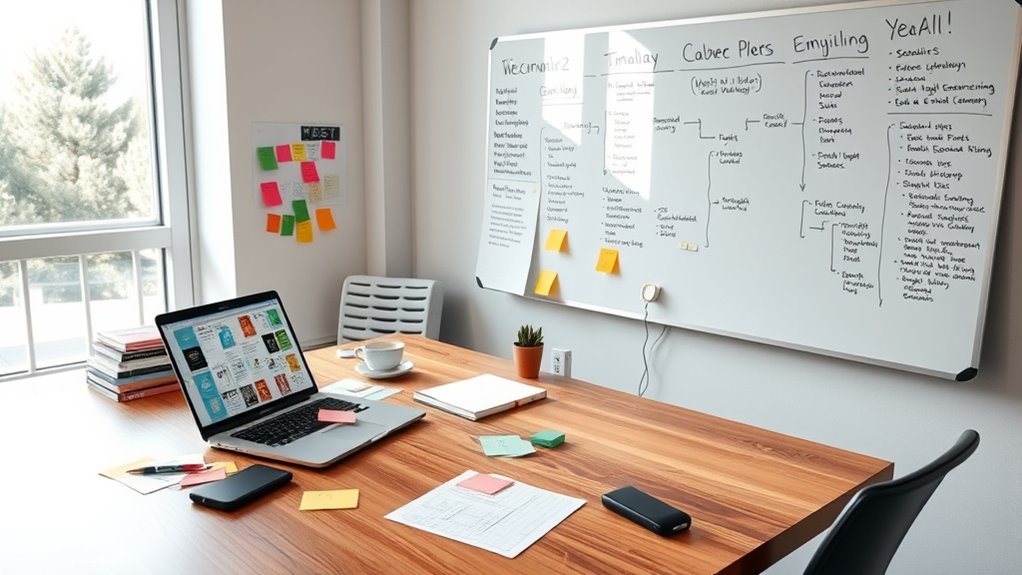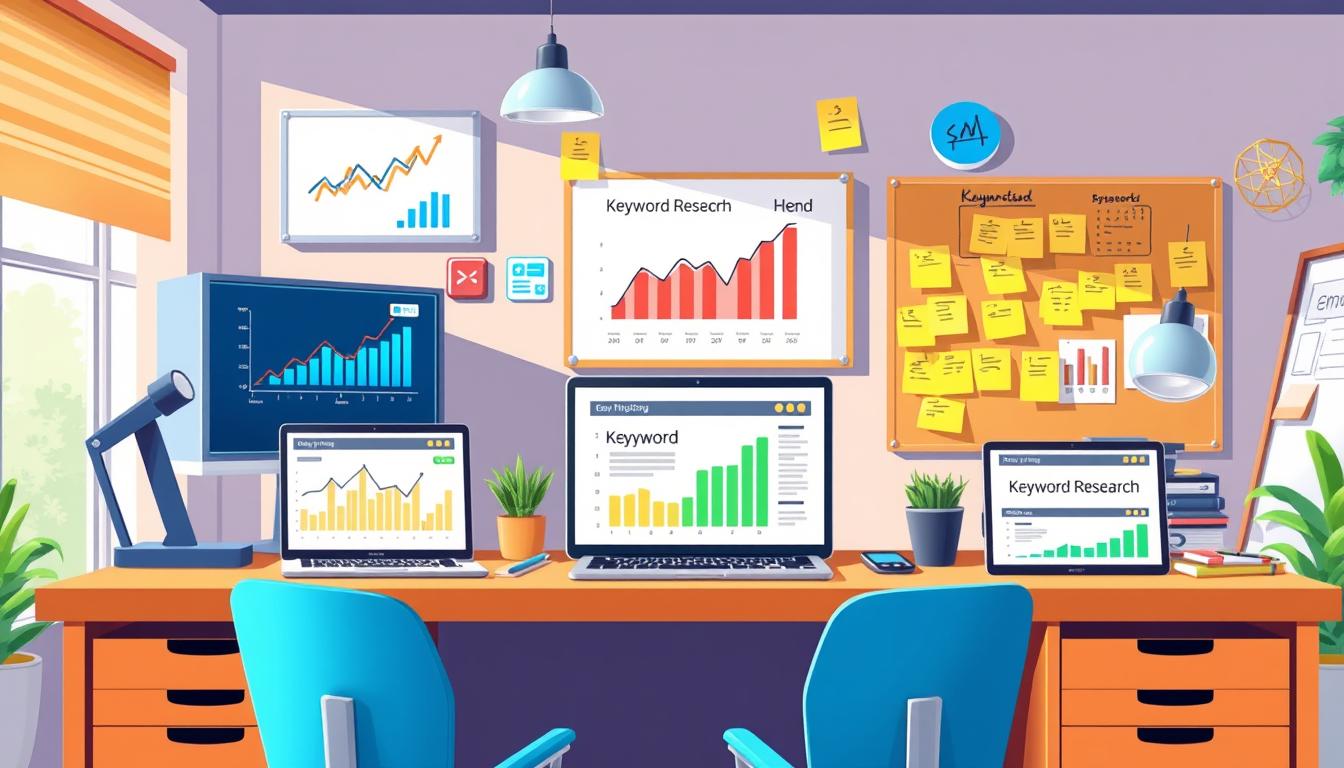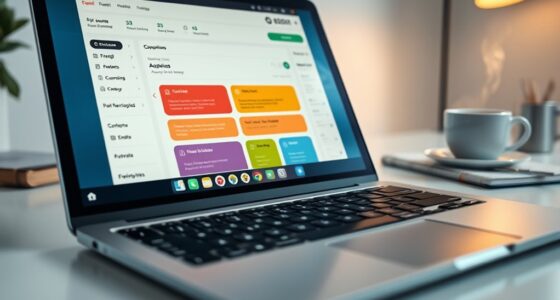To design a year-long email roadmap, start by defining your marketing goals and segmenting your audience for personalized messaging. Develop a content calendar that aligns with seasonal events, product launches, and promotions, while planning A/B tests to optimize open and click-through rates. Regularly review performance metrics to refine strategies and stay agile. As you plan ahead, you’ll discover how to keep campaigns relevant and impactful throughout the year—continue to explore for more insights.
Key Takeaways
- Establish clear goals aligned with overall business objectives to guide your annual email marketing strategy.
- Develop a comprehensive content calendar synchronized with seasonal events, product launches, and promotional periods.
- Segment your audience based on behavior, preferences, and demographics to personalize messaging and improve engagement.
- Incorporate A/B testing plans for subject lines, send times, and content to optimize campaign performance over time.
- Regularly review performance metrics to refine segmentation, timing, and messaging strategies for continuous improvement.

Creating an effective email roadmap is vital for achieving your marketing goals and engaging your audience consistently. When planning a year-long strategy, you need a clear understanding of how to segment your audience effectively and leverage A/B testing to optimize your campaigns. Segmentation strategies allow you to tailor your messages based on customer behavior, preferences, or demographics. By dividing your email list into targeted groups, you guarantee that each subscriber receives content relevant to their interests, increasing engagement and conversions. For example, you might segment your audience by purchase history, engagement level, or location. This approach lets you craft personalized campaigns that resonate more deeply, leading to better open and click-through rates over time.
Effective email segmentation boosts engagement and conversions by delivering personalized content tailored to customer behavior and preferences.
As you develop your roadmap, consider how you’ll implement A/B testing throughout the year. A/B testing involves comparing two versions of an email—varying subject lines, send times, or content—to see which performs better. This process is vital for refining your messaging and maximizing your results. Incorporate A/B testing at various touchpoints, such as testing different calls-to-action or visuals, to continually improve your campaigns. You’ll discover what resonates most with your audience and can make data-driven decisions that enhance your email performance. Planning these tests in advance ensures you allocate resources efficiently and learn from each iteration, steadily increasing your email effectiveness.
Mapping out your content calendar for 6 to 12 months also means aligning your email themes with seasonal events, product launches, or promotional periods. This proactive approach helps you avoid last-minute scrambles and guarantees your messaging remains timely and relevant. As part of your planning, identify key milestones and plan corresponding campaigns around them, using segmentation strategies to target specific groups for maximum impact. Incorporating insights from Kia Tuning can inspire themed campaigns that highlight performance upgrades or special features, making your content more engaging. Additionally, regularly reviewing your email performance metrics will inform your ongoing strategy, adjusting your segmentation and testing efforts based on what the data reveals.
Furthermore, an effective email roadmap involves setting clear goals for each phase of the year. Whether it’s increasing subscriber engagement, boosting sales, or nurturing leads, defining these objectives helps you measure success and refine your tactics. Combine your goals with your segmentation and testing plans, so you can track which strategies lead to the desired outcomes. This integrated approach ensures your email marketing efforts are cohesive and focused, providing a roadmap that guides your campaigns from initial planning through ongoing optimization. With a well-structured plan in place, you’ll be better equipped to deliver relevant, compelling content that drives results throughout the year.
Frequently Asked Questions
How Do I Adapt My Email Roadmap for Sudden Market Changes?
When market volatility hits, you should quickly update your email roadmap by incorporating contingency planning. Stay flexible by regularly reviewing your schedule and content strategy, allowing you to adapt messaging to current trends. Prioritize urgent campaigns and be ready to pause or shift focus on less relevant topics. This proactive approach helps you respond swiftly to sudden market changes and keeps your email marketing effective despite uncertainty.
What Tools Are Best for Long-Term Email Campaign Planning?
You might worry about tools being too rigid, but an email calendar combined with adaptable campaign templates can make long-term planning easier. Use platforms like Mailchimp or HubSpot that offer robust scheduling features and customizable templates. These tools help you visualize your campaigns, stay organized, and adjust quickly if market trends shift. With them, you gain confidence to maintain consistency and stay ahead of your audience’s needs.
How Often Should I Review and Update My Email Roadmap?
You should review and update your email roadmap at least quarterly to stay aligned with campaign milestones and audience segmentation. Regular checks help you adapt content based on engagement data, seasonal trends, and audience changes. By doing so, you make certain your campaigns remain relevant and effective, allowing you to refine your messaging, optimize segmentation, and meet your long-term goals more efficiently.
How Can I Align Email Campaigns With Overall Marketing Strategies?
To align your email campaigns with overall marketing strategies, you should integrate your content calendar with your brand messaging. Start by mapping out key campaign themes and objectives that support your broader marketing goals. Then, guarantee each email aligns with your brand voice and strategic initiatives. Regularly review campaign performance, adjust messaging as needed, and coordinate timing to reinforce your brand’s message across all channels.
What Are Common Pitfalls in Planning a Year-Long Email Strategy?
You often fall into the trap of overly rigid schedules, making it hard to adapt to evolving circumstances. Neglecting audience insights can also lead to irrelevant content that doesn’t resonate. To avoid these pitfalls, stay flexible with your plans, regularly analyze engagement data, and adjust your strategy accordingly. Remember, a successful year-long email strategy balances structure with responsiveness, ensuring your campaigns remain relevant and effective throughout the year.
Conclusion
Now that you’ve set your 6–12 month email roadmap, are you ready to turn your plans into action? Remember, consistent review and flexibility are key to staying on track and achieving your goals. Keep analyzing performance, adapting strategies, and engaging your audience. After all, isn’t the ultimate reward a loyal, responsive subscriber base that grows with your brand? Start mapping out your next steps today and watch your email marketing thrive.
Natali – Editor in Chief (Strategy and Mastery, AI Expert) Natali, our Editor in Chief, is the driving force behind our content’s strategic direction. With a keen eye for detail and a deep understanding of market trends, Natali ensures that our content is top-notch and strategically aligned with our client’s goals. Her expertise in AI helps to seamlessly integrate advanced technology into our marketing strategies, pushing the boundaries of conventional marketing.










